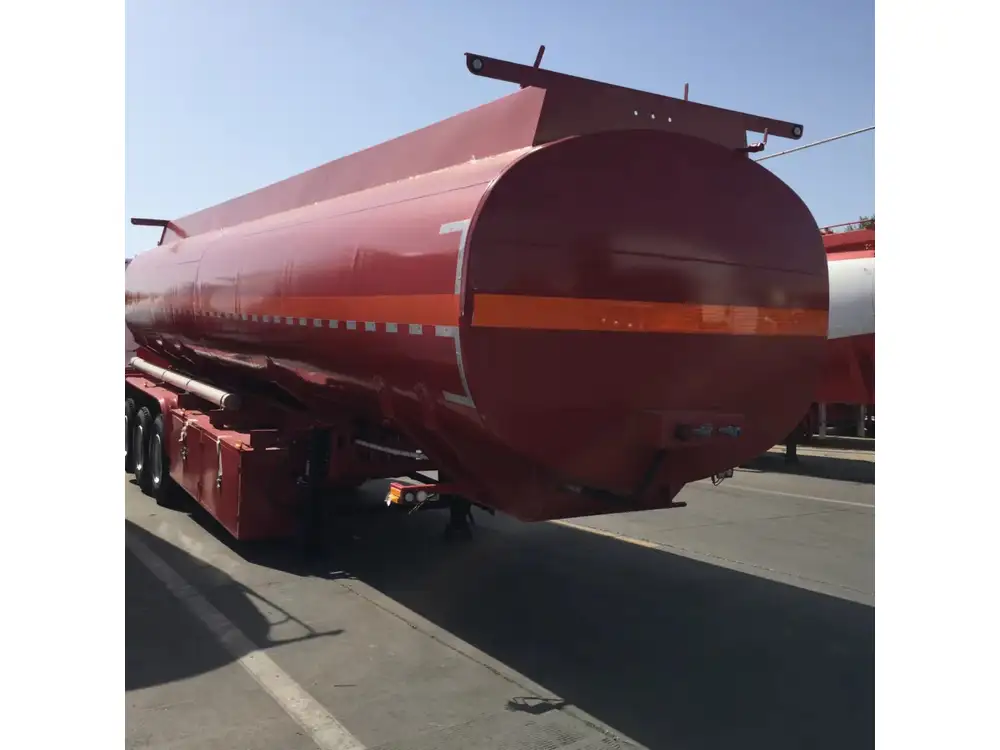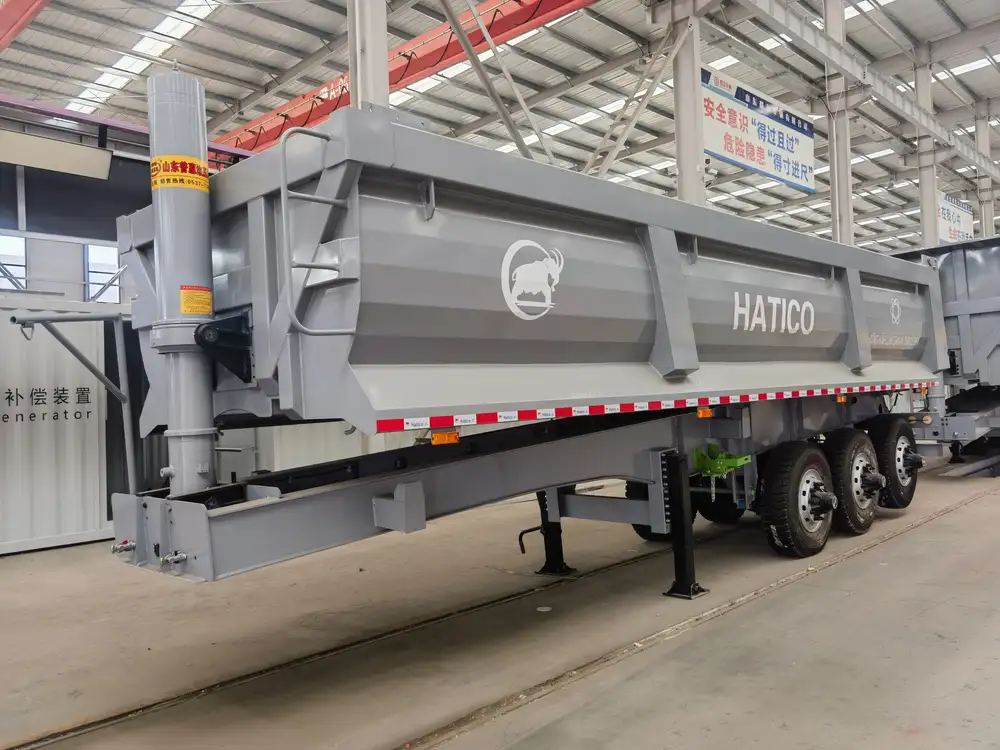When it comes to the logistics and transportation industry, understanding vehicle dimensions is not merely a matter of curiosity—it’s a fundamental aspect that dictates operations. Specifically, the sizes of semi truck trailers can significantly influence cargo capacity, roadway compliance, and overall transportation efficiency. This article dives deep into the dimensions of semi truck trailers, exploring various types, their specifications, and any relevant regulations to provide a comprehensive resource for industry professionals and enthusiasts alike.
1. The Anatomy of a Semi Truck Trailer
Before delving into measurements, it’s essential to understand what constitutes a semi truck trailer. Typically, a semi truck consists of a tractor unit (the front part) and a semi trailer (the rear part). The semi trailer is designed to carry freight, relying on the tractor for propulsion. Key components of a semi trailer include:
| Component | Description |
|---|---|
| Chassis | The frame that supports the trailer’s structure |
| Axles | Wheels are mounted on axles, crucial for load distribution |
| Suspension System | Ensures comfort and stability while driving |
| Cargo Area | Main area where goods are loaded and stored |
| Rear Door | Provides access to the cargo area |
Understanding these components will aid in comprehending the trailer’s dimensions and their impact on cargo transport.
2. Typical Sizes of Semi Truck Trailers

2.1 Standard Dimensions
The dimensions of semi truck trailers can vary based on design, purpose, and regional regulations. However, most trailers fall within certain standard size ranges:
- Length: The typical length for a semi truck trailer ranges from 48 to 53 feet in the U.S. 53 feet trailers are most commonly used for hauling general freight, while 48 feet trailers are often employed for transporting heavier or specialized loads.
- Width: The standard width is 8.5 feet (102 inches), accommodating a considerable range of cargo sizes without exceeding legal limits.
- Height: The height can vary, but most trailers reach approximately 13.5 feet from the ground to the top of the trailer, though this can fluctuate based on cargo type.
2.2 Specialized Trailers
Certain industries require specialized trailer designs, leading to variations in dimensions:
| Trailer Type | Length | Width | Height | Common Uses |
|---|---|---|---|---|
| Flatbed Trailer | 48 – 53 ft | 8.5 ft | 13.5 ft | Construction, oversized loads |
| Refrigerated Trailer | 48 – 53 ft | 8.5 ft | 13.5 ft | Perishable goods |
| Dry Van Trailer | 48 – 53 ft | 8 ft | 13.5 ft | General freight |
| Tanker Trailer | 40 – 50 ft | 8 ft | 13.5 ft | Liquid and chemicals |
| Lowboy Trailer | 32 – 53 ft | 8.5 ft | 12 – 18 ft | Heavy equipment, machinery |
This structured classification provides insight into how various industries adapt their transport solutions to meet specific needs.
3. Regulatory Considerations
Understanding regulations is vital for compliance and safe operation. Here are key regulations governing semi truck trailer dimensions:
- Federal Regulations: The United States has established stringent guidelines through the Federal Motor Carrier Safety Administration (FMCSA) regarding maximum trailer lengths, widths, and heights. For example, most states maintain a maximum trailer length of 53 feet for semi trailers operating on interstate highways.
- State Regulations: Regulations can vary considerably from one state to another. Some states might allow longer combinations, while others impose stricter limitations. It’s crucial for operators to stay abreast of local laws, as they influence route planning and operational efficiency.
- Weight Restrictions: Alongside size, the Gross Vehicle Weight Rating (GVWR) plays an essential role in transportation. Most semi truck trailers carrying freight must adhere to a maximum weight limit of 80,000 pounds on highways, comprising tractor weight, trailer weight, and cargo.

4. Calculating Cargo Capacity
4.1 Understanding Payload and Volume
Cargo capacity is a critical metric in determining how many goods can be transported effectively. This calculation considers both weight and space:
- Weight Capacity: The payload or maximum weight a trailer can carry, calculated as ( \text{Weight Capacity} = \text{GVWR} – \text{Tare Weight} ) (the empty weight of the trailer).
- Volume Capacity: This is measured in cubic feet, calculated using the formula ( \text{Volume} = \text{Length} \times \text{Width} \times \text{Height} ). For a standard 53-foot trailer, the volume typically amounts to around 3,500 cubic feet.
4.2 Examples of Capacity Calculations
To illustrate the differences in cargo capacity for various trailer types, refer to the table below:
| Trailer Type | Length | Height | Volume (ft³) | Typical Weight Limit (lbs) |
|---|---|---|---|---|
| Standard Dry Van | 53 ft | 13.5 ft | 3,500 | 45,000 |
| Refrigerated Van | 53 ft | 13.5 ft | 3,500 | 45,000 |
| Flatbed | 53 ft | 1 ft | 53,000 lbs (weight dependent) | 48,000+ |
| Tanker | 45 ft | 8 ft | Varies | 80,000+ (weight dependent) |
In logistics, effectively determining payloads and volumes is critical for maximizing transport efficiency and adhering to regulations.

5. The Impact of Trailers on Transportation Efficiency
5.1 Fuel Efficiency and Aerodynamics
The design and size of a semi truck trailer can have profound effects on fuel efficiency. Here we uncover some considerations:
- Aerodynamics: Trailers with a streamlined shape reduce wind resistance, leading to improved fuel economy. This can save substantial costs over time, particularly for long-haul journeys.
- Weight Influence: Heavier trailers decrease fuel efficiency. Hence, manufacturers increasingly design lighter trailers using advanced materials like aluminum and composite materials.
5.2 Turn Radius and Maneuverability
The size and configuration of a semi truck trailer can also affect its maneuverability:
- Longer Trailers: While a 53-foot trailer can accommodate more cargo, it requires greater turning radii and can be difficult to navigate in tight spaces.
- Shorter Trailers: Although limiting in cargo capacity, shorter trailers can provide improved maneuverability and easier handling in urban environments.

6. Innovations in Trailer Technology
The transportation industry’s future is increasingly regulated by technological advancements. Here are some innovations shaping trailer design today:
- Telematics Systems: These systems track trailer performance, real-time location, and cargo conditions. They facilitate enhanced operational efficiency by providing critical metrics for decision-making.
- Weight Sensors: Integrated weight sensors help monitor a trailer’s load in real-time, suggesting optimal load distribution and preventing overload—thus ensuring compliance and safety.
- Electric Refrigeration Units: Environmentally friendly solutions are pivotal, and electric refrigeration units for refrigerated trailers reduce emissions while enhancing temperature control for perishable items.
Conclusion
Understanding the dimensions, types, and regulations surrounding semi truck trailers is crucial for anyone involved in the transportation and logistics industry. The size of a trailer directly influences its capacity, compliance with road regulations, and operational efficiency. With an ever-evolving landscape driven by regulations and innovative technologies, staying informed is essential for maximizing performance and ensuring sustainable practices in transport operations. As we continue to adapt to challenges in the logistics sector, grasping how big a semi truck trailer truly is will remain an integral factor in optimizing freight management strategies.
By leveraging this comprehensive overview, professionals can make well-informed decisions that not only enhance efficiency but also align with compliance requirements, thereby ensuring smooth operation in the competitive arena of freight transportation.



